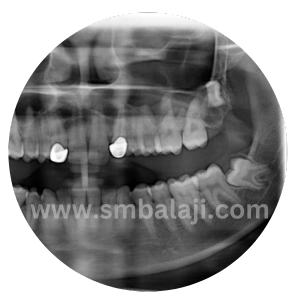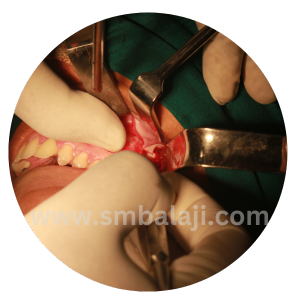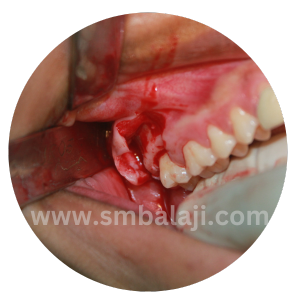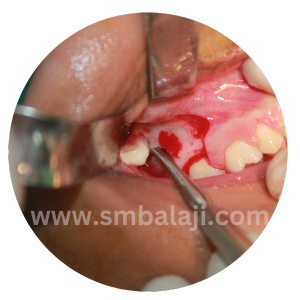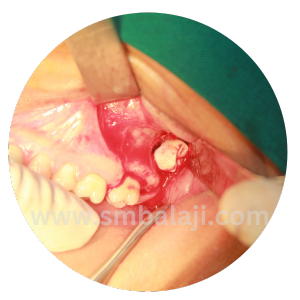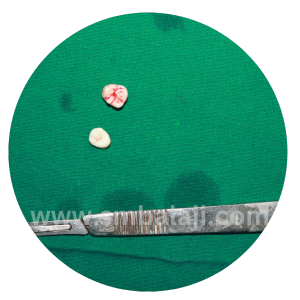TRANSALVEOLAR EXTRACTION
At times, the journey of a tooth into proper alignment takes an unexpected turn, becoming entrapped within the gum tissue and jaw bone, a condition commonly known as an “impacted tooth.” Several factors can lead to impactions, such as a jaw too small to accommodate the emerging teeth or the teeth undergoing twists, tilts, or displacements during their emergence process.
The most frequent victims of impaction are wisdom teeth or third molars. Unfortunately, impacted teeth don’t just bring discomfort; they can cause swelling, pain, and infections in the surrounding gum tissue. The consequences may extend further, leading to permanent damage to neighboring teeth or even the formation of cysts or tumors capable of eroding sections of the jaw. Swift action is often advised to remove impacted teeth to prevent such complications.
Our Approach: Expert Transalveolar Extraction
Balaji Dental and Craniofacial Hospital specializes in the meticulous art of transalveolar extraction for impacted teeth. Our seasoned team understands the intricacies of impacted teeth removal and the potential risks associated with untreated cases.
Why Choose Transalveolar Extraction at Balaji Dental and Craniofacial Hospital?
Expert Diagnosis: Our experienced professionals conduct thorough evaluations to precisely diagnose impacted teeth and assess their impact on surrounding structures.
Advanced Techniques: Utilizing state-of-the-art techniques, we perform transalveolar extraction with precision, ensuring minimal discomfort and optimal results.
Prompt Intervention: Recognizing the urgency in addressing impacted teeth, we offer prompt intervention to alleviate pain, prevent infections, and safeguard overall oral health.
Preventive Care: Beyond extraction, we emphasize preventive care to mitigate the risk of future impactions, guiding patients on maintaining optimal oral health.
Holistic Approach: Our commitment extends beyond the procedure; we focus on the holistic well-being of our patients, providing post-extraction care and guidance for a smooth recovery.
Experience the transformative care at Balaji Dental and Craniofacial Hospital, where expertise meets compassion in the pursuit of optimal oral health. Say goodbye to the discomfort of impacted teeth – your radiant smile awaits!

